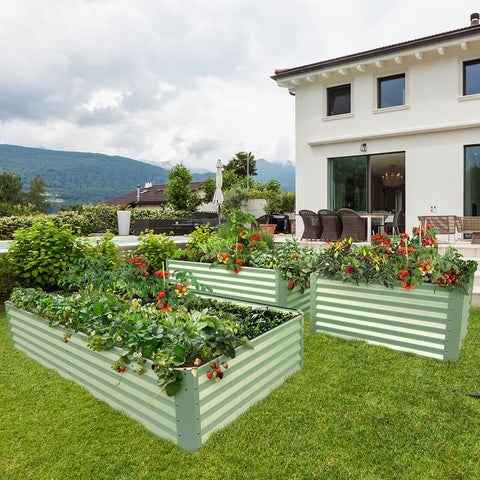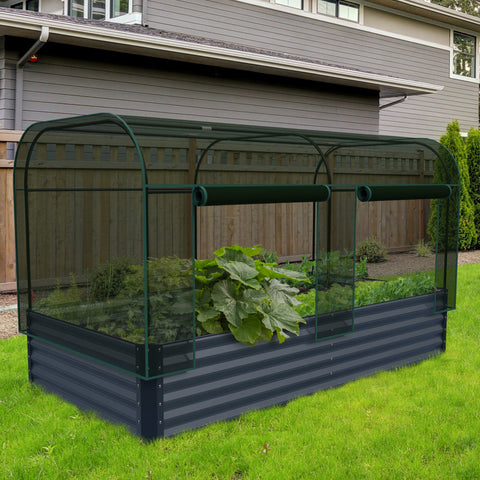Not every gardener knows how to make garden beds winter, but garden beds are becoming more and more popular. Even gardeners who have a lot of ground space will choose to add garden beds to plant plants because of their mobility and the benefits to root health when using them. The following contents have certain reference value for garden beds.
The main purpose of protecting the garden bed in cold winter weather is to prevent the soil from completely freezing. It is expected that the surface soil or the top several inches of soil will freeze. Another advantage of protecting garden beds is to provide them with windproof or other covering, which can extend the life of garden beds.
Cover growth bag
Laying a thick layer of straw, sawdust or compost on the top of the garden bed will help protect the soil and any perennial plants that survive the winter. Rice straw is particularly useful because it can not only keep heat, but also let water flow freely. The straw will also decompose slowly and fertilize the plants in the flowerpot.
Cover clipping
The hairy wild peas, dark red clover, peas, barley and wheat are all fast-growing crops, which can be used as living mulch and protective plants in winter. Depending on the crops you choose, they can have many benefits, including adding nitrogen to the soil and improving soil compaction. The best way is to let the mulch grow until flowering, and then use the "chop" method. Cut off crops and leave leaves as mulch in winter.

Greenhouse plastics
This kind of plastic is specially used to absorb heat, but it also allows light to pass through. If treated properly, it will last for several years. Some UV-stabilized plastics can even be used for up to 10 years. If you still have perennial plants, herbs and shrubs in your garden bed (instead of empty overwintering plants), you must remove the plastic in a warm sunny day, because you don't want to absorb too much heat and eventually burn your plants. The general rule of thumb is to take back greenhouse plastic in sunny days with temperatures above 40 degrees Fahrenheit.
Burlap
If you wrap burlap at the bottom of the garden bed, you can protect an empty garden bed. This kind of packaging helps to keep warm. Because the gunny bag is woven, it can make the air flow better, and the risk of accidentally baking plants or garden soil in sunny days is also less.
Tar
Any type of tarpaulin can be used as long as it is large enough to cover your garden bed. Dark tarpaulins help capture and retain more heat around plants. Use the same precautions as greenhouse plastics. In warm days, you will want to uncover your plants, even your empty garden bed, to avoid the sun from shining on the soil. This refers to the process that occurs when too much heat is trapped in the soil, which will kill any seeds/microbial groups several inches from the top of the soil. Some wooden piles will help to keep the tarpaulin above the soil.

Cold frame
These frames can be purchased in stores, self-made, or even constructed from recycled wood and glass panes. They are basically mini greenhouses, which can be made of glass or plexiglass. Compared with greenhouse plastic, the advantage of cold frame is that it is stronger and can better resist extreme winter weather events, such as heavy snow, strong wind and even hail.
greenhouse
They come in a variety of sizes and prices, so each budget has a choice. If it is convenient for you, they can also be built with repurposed panes and doors. For large structures like greenhouses, adding heat sources is also beneficial, which can help you grow further in the season.









